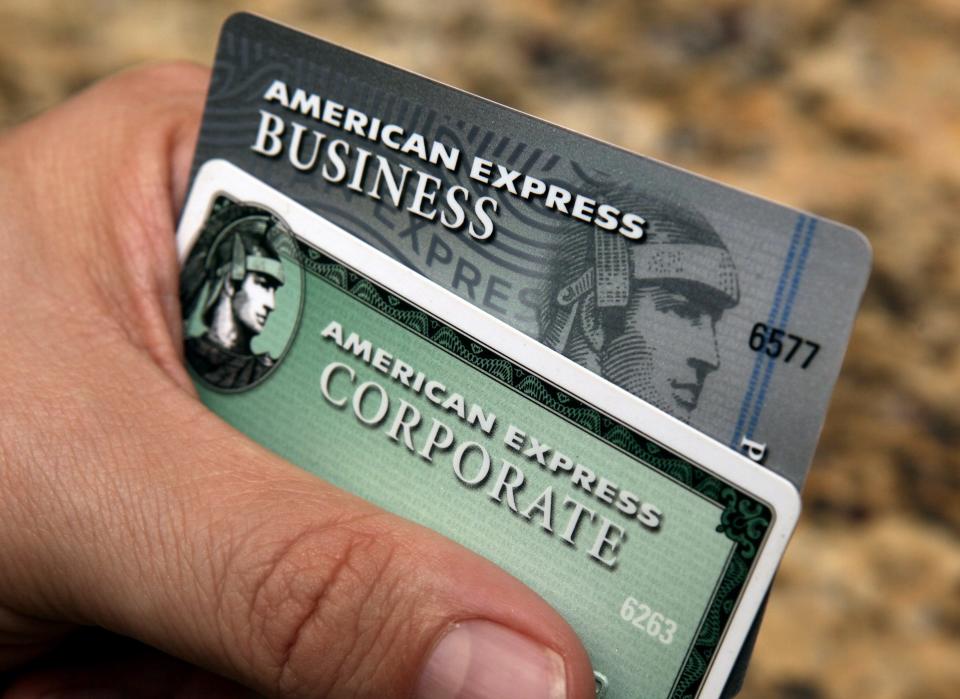Credit card interest rates are at a record high. Here's what you can do to cut debt.
Consumers are sitting on mountains of debt, and many people face record-high interest rates on credit card purchases that they can't pay off each month.
Will all this be enough to derail holiday shopping merriment? Probably not, though tips to keep spending and get debt under control ring louder than ever.
The typical credit card now charges a record-high 20.72% rate on introductory offers, reports Bankrate.com. Certain types of cards, such as those sponsored by specific stores or retailers, are even higher, averaging 28.93%, according to a new survey by the company.
People who can’t pay off their balances in full each month face high-interest expenses and, possibly, many months if not years of paying off those bills.
In fact, credit card debt hit a record $1.03 trillion in the second quarter of this year, the Federal Reserve Bank of New York reported. In 2022, consumers were charged $105 billion in interest on cards and accrued $25 billion in late payment and other fees, the federal Consumer Financial Protection Bureau reported recently.
Few signs yet of tapped-out consumers
Nevertheless, delinquencies, bankruptcies and the other usual alarms aren’t sounding off right now, and retailers are preparing for a reasonably robust holiday shopping season.
“Most people are keeping up with their bills,” said Ted Rossman, senior industry analyst at Bankrate.com.
Several factors explain that, but the biggest one likely is a still-robust job situation, with plenty of openings and few layoffs, he said. Many people still have healthy financial cushions, whether from housing equity, pandemic-relief aid that they haven’t fully spent or other reasons.
Over the past year or so, total credit card debt has jumped by 11%, despite rising rates, as people borrow in an effort to maintain the standard of living that they enjoyed during the pandemic, observed David Kelly, chief global strategist at J.P. Morgan Asset Management.
“It should be emphasized, however, that this growth in debt is likely very far from a breaking point,” he wrote in a recent commentary.
J.P. Morgan estimates that debt servicing or managing debt payments lately has absorbed just 9.9% of household disposable income. That's still well below the 13.2% peak that was reached roughly a decade and a half ago.
Nor, of course, do all credit card users face those 20%-plus interest rates, as about half of borrowers pay off their credit balances each month and long-standing accounts feature lower rates.
However, Bankrate's latest reading shows 47% of consumers are unable to pay off their card debts each month, up from 39% as of December 2021, near the time when the Federal Reserve started to hike rates. The jump in average credit card rates to 20.72% today from 16.16% two years ago is almost fully attributable to the Fed's rate hikes to tamp down on inflation, Rossman said.
Keeping credit balances manageable

What can consumers do to keep their credit card debts under control?
Aside from the usual cautions such as sticking to a budget, paying solely with cash and taking on a side job, now might be a good time for people with lingering card debts to consider a 0% balance transfer. These allow consumers who switch credit cards to delay paying interest for up to 21 months. Two cards Rossman likes for this purpose are Wells Fargo Reflect and Citi Simplicity.
Consumers who choose the balance-transfer route often face a fee of 3% to 5% of the balance moved, but that still can be a good deal for the interest-payment respite offered, he said. To qualify for a transfer, borrowers typically need decent credit scores of around 670 or higher and often can't move more than $5,000 to $6,000 in debt, he added.
Card issuers receiving high consumer-satisfaction scores in general according to a recent WalletHub survey include Navy Federal Credit Union, U.S. Bank, Discover, Amex and Chase. That survey showed even higher interest charges on new cards than the Bankrate survey, averaging close to 22.4%.
People seeking a new credit card still can find those charging interest below 20%. Rossman suggests looking at cards issued by various federally insured credit unions, which typically cap interest at rates no higher than 18%, he added.
Given such high-interest charges, it doesn't take long to fall behind if you can't make sufficiently high payments. If that's the case, you might need to pursue more concerted help from nonprofit credit counseling groups such as Money Management International and many others, Rossman suggests.
Card late fees could start easing
While cardholders won't find much to cheer about concerning interest rates, there's some good news on late fees, as the Consumer Financial Protection Bureau has proposed cutting them to as low as $8 per violation, with some exceptions.
First, it was tips. Now, it's fees.: How Americans pay to use credit cards
This rule could take effect in early 2025, says Consumer Reports, which recently estimated 52 million Americans paid a late fee within a prior 12-month period.
However, credit card interest rates aren't likely to start a downward trend until the Fed starts cutting rates, which doesn't seem likely at least before the second half of 2024.
Reach the writer at russ.wiles@arizonarepublic.com.
This article originally appeared on Arizona Republic: Credit card interest rates are at record high. How to cut costs.


